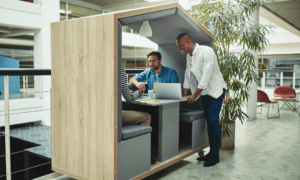A well-designed office is more than just a workspace, it’s the engine that drives innovation, collaboration, and efficiency. In the modern workplace, office furniture is a basic part of shaping employee productivity. Beyond aesthetics, it impacts comfort, health, and overall job satisfaction. In this article, we’ll explore the role of office furniture in boosting productivity.
The Role of Office Furniture in Boosting Productivity
Here are key ways in which office furniture contributes to enhancing productivity:
1. Ergonomics and Employee Well-being

Ergonomic furniture is a game-changer. It supports the body’s natural posture and minimizes physical strain, preventing common issues like back pain, neck tension, and carpal tunnel syndrome. Employees who feel physically comfortable can focus better, leading to higher productivity.
For example, chairs with adjustable heights and armrests allow employees to tailor their seating to their needs, reducing discomfort over long work hours.
2. Encourage Movement
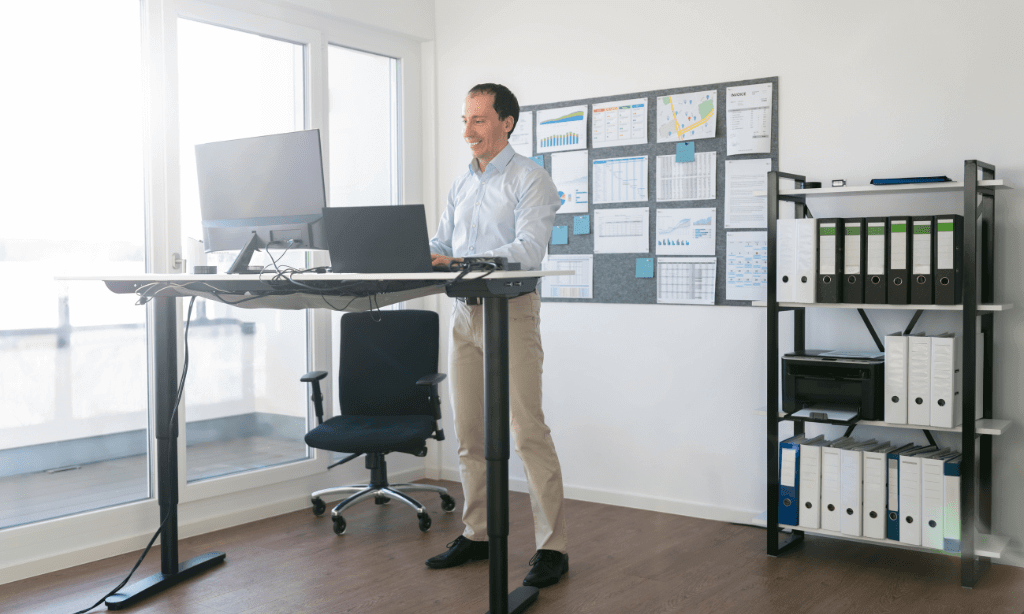
Adjustable furniture, such as standing desks, is popular because of the health benefits it provides. Alternating between sitting and standing improves blood circulation and energy levels. The same applies to ergonomic chairs that feature adjustable features for diverse body types for long-term comfort.
3. Improve Posture and Comfort
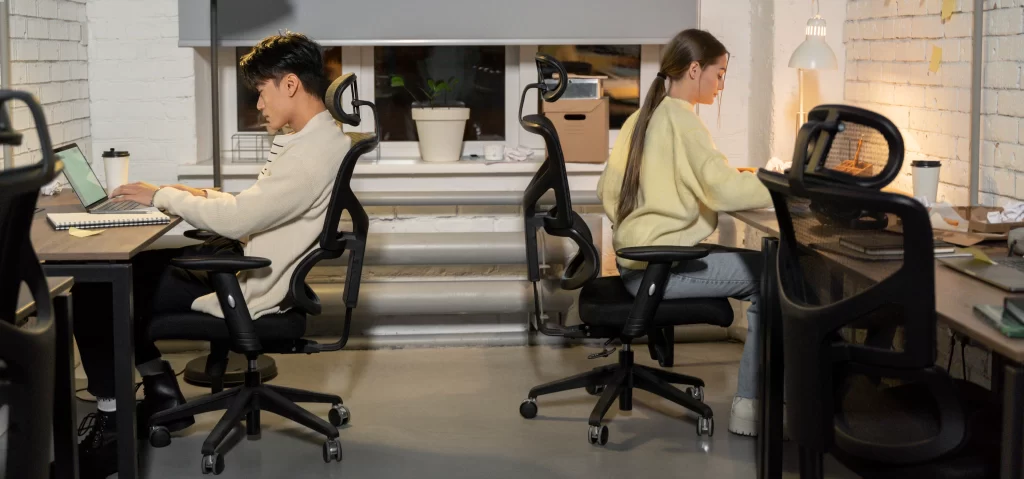
Office hours are spent sitting. There is a need for proper lumbar support. Chairs with built-in lumbar support reduce pressure on the lower back, enhance posture, and minimize the risks of chronic pain.
Footrests and keyboard trays are seemingly minimal changes that make all the difference in ergonomic workplace ergonomics. Employees will not strain as they place their legs comfortably due to footrests, and they will not cause strain to their wrists as they work on a keyboard tray.
4. Ease of Adaptation and Flexibility
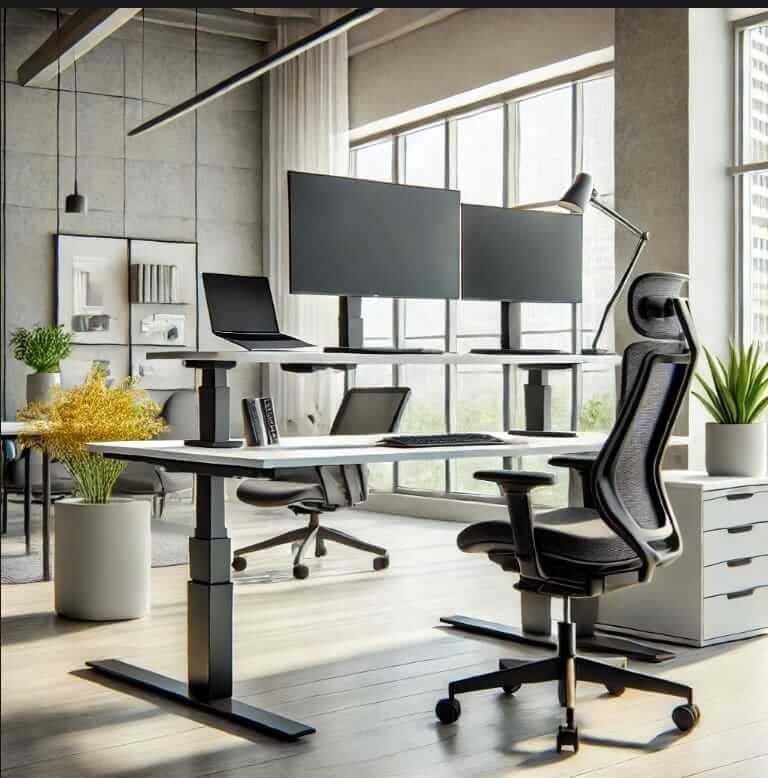
Modular furniture is a fast solution for a modern office. It can fit most layouts and purposes, so growth and organizational change are no problem. For example, modular desking furniture can easily fit different collaborative projects or individual work altogether.
5. Personalization of Workspace
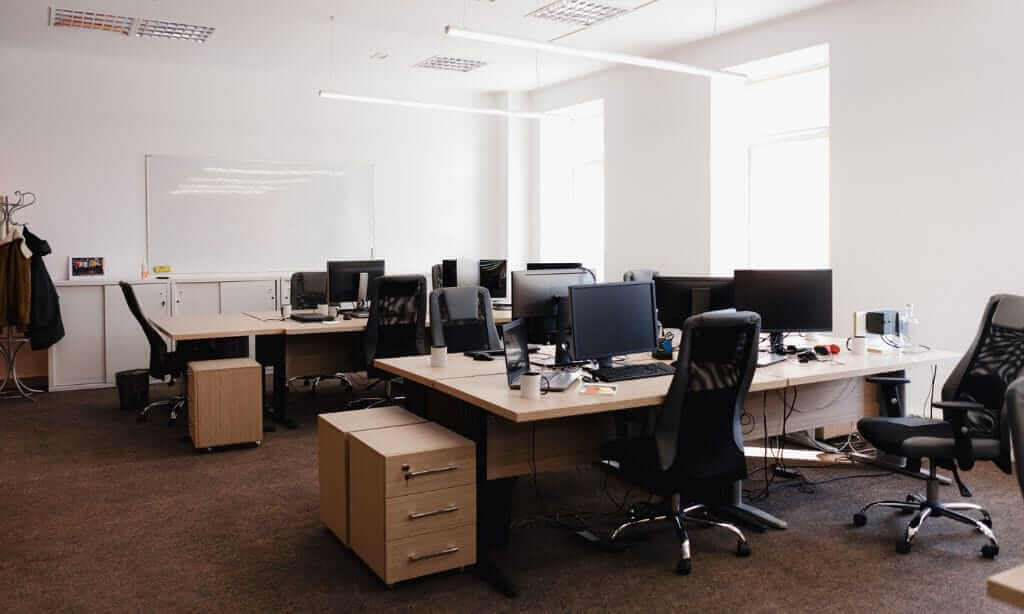
It gives employee room for personalizing their work areas and may make them personally responsible for that. Little details such as having liftable monitor stands or private storage will be enough to make them comfortable and productive.
6. Improved Aesthetics and Motivation
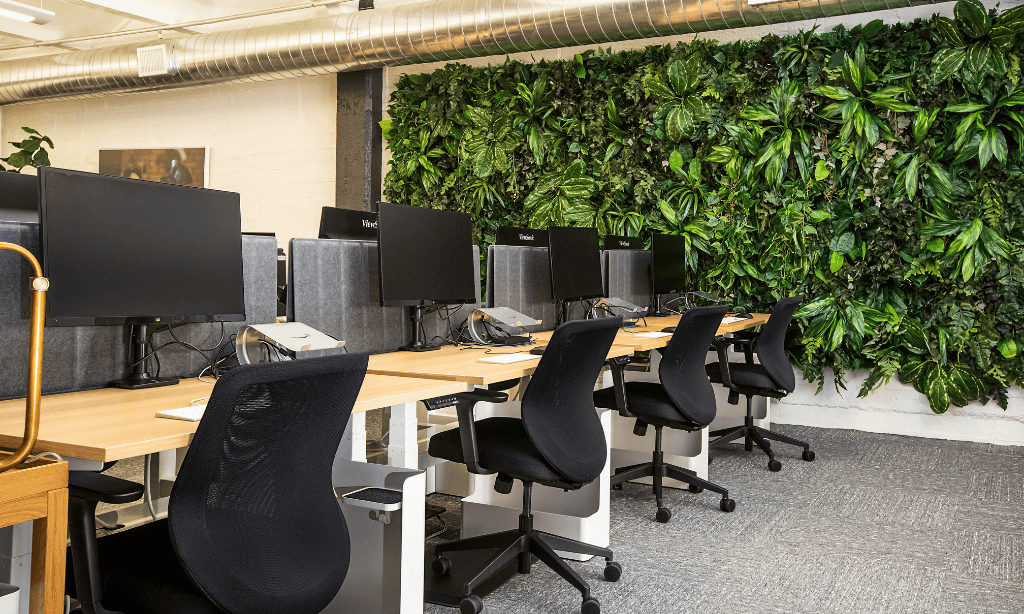
The visual appeal of office furniture also influences productivity. Bright, inviting spaces in fitting colors and styles improve the mood of employees. For instance, furniture with pops of green or blue creates a relaxed atmosphere, but bright and modern designs make an employee feel that someone cares about them and should give their all.
7. Office Furniture Determines Collaboration

Open Workstations: The designs of the open offices with shared workstations encourage spontaneous collaboration and idea-sharing. They should, however, be balanced by quiet zones where employees can concentrate.
Comfy Meeting Spaces: The design of the meeting spaces matters too. The space has to be more welcoming for the team to give ideas. Properly laid-out furniture in such spaces encourages participation and reduces distraction.
8. Technological Integration
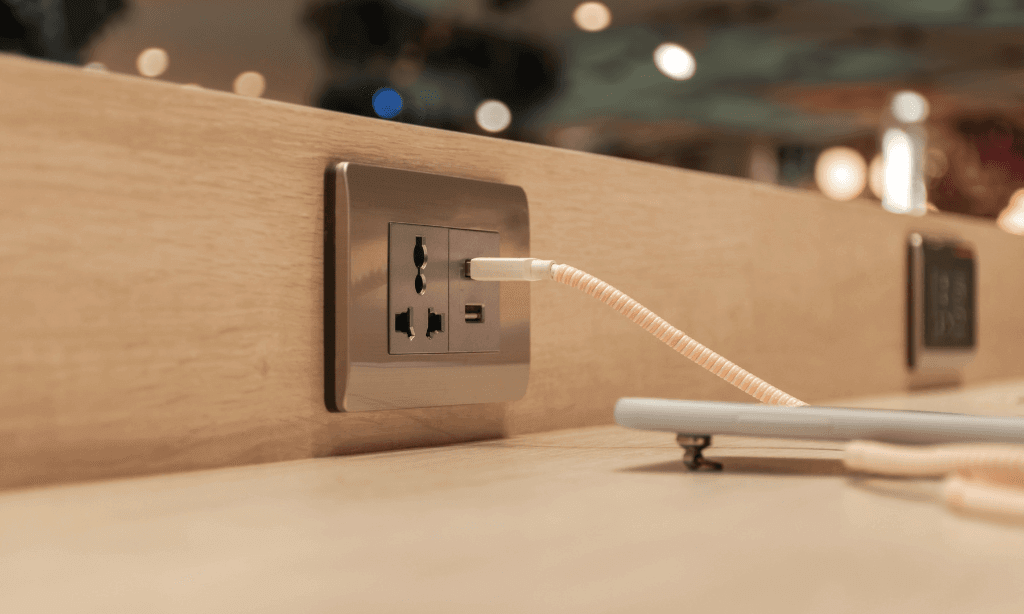
Most of today’s office furniture comes with a technological integration known as charging ports to keep everyone connected and keep unnecessary time consumption by looking around for a source of power to charge their various devices.
Certain furniture has incorporated an IoT functionality that allows one to change light or monitor orientation using the connected gadget. Such developments make the operations less cumbersome as well as pleasing.
The Financial Benefits of Productivity-Boosting Furniture
1. Reduced Employee Absenteeism: Furniture that promotes good health reduces sick days caused by discomfort or injury. For instance, ergonomic seating can help prevent back pain, a common reason for absenteeism.
2. Increased Work Output: Comfortable employees are more engaged and productive. Companies that invest in their office setup often see measurable improvements in output and morale.
3. Lower Healthcare Costs: Ergonomic furnishing reduces the risk of workplace-related health concerns such as repetitive strain injuries or posture-related issues, thus saving employers medical costs in the long run.
4. Improved Employee Retention: An ergonomic workplace indicates that an employer cares about the employee’s well-being; this can boost job satisfaction and ensure that there are fewer turnover costs in hiring and training.
Ready to boost productivity, enhance comfort, and create an inspiring office environment? Aadinath Office Furniture offers ergonomic, stylish, and customizable solutions tailored to modern workplaces. Whether it’s chairs with superior lumbar support, standing desks for active workdays, or modular furniture for dynamic setups, we’ve got you covered.
Click below to explore our collection and take the first step toward a more productive and healthier workplace.
Read Also:
- Top 6 Benefits of Ergonomic Office Furniture
- 5 Best Ergonomic Office Chairs
- How To Choose Roght Office Chair
- Top 5 Must-Have Office Furniture
Frequently Asked Questions
Q. What would be called the most crucial ergonomic office furniture?
It is the office chair, as it ensures proper posture and keeps long-term discomfort away from the workplace.
Q. How does furniture design impact mental health?
Ergonomic and aesthetically pleasing furniture reduces stress and encourages focus by creating a comfortable and inspiring workspace.
Q. Is sustainable furniture cost-effective?
Yes, sustainable furniture often lasts longer and can save costs over time while supporting eco-friendly practices.
Q. What is modular furniture, and why is it useful?
Modular furniture can be rearranged or customized for various purposes, making it ideal for evolving office needs.
Q. What are the ways of choosing an office chair in which I would pass most of my working time?
I will choose the adjustable chair, with back support made of quality material.
Conclusion,
Office furniture is not just an object but an important part of productivity, health, and teamwork. Ergonomic, stylish, and adaptive furniture highlights the role of office furniture in boosting productivity, and creating a platform where staff thrive.


